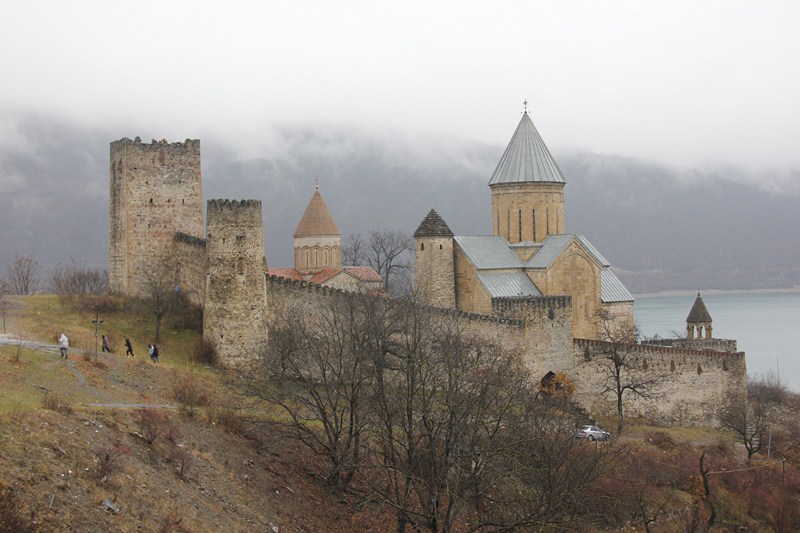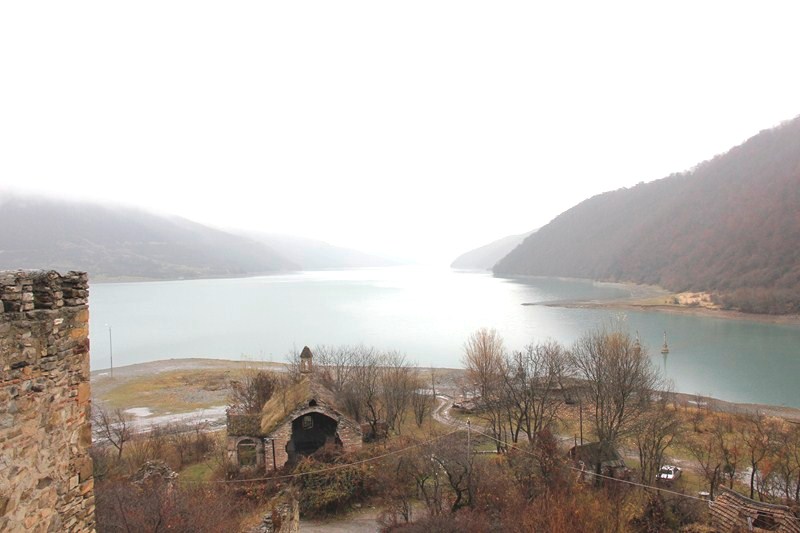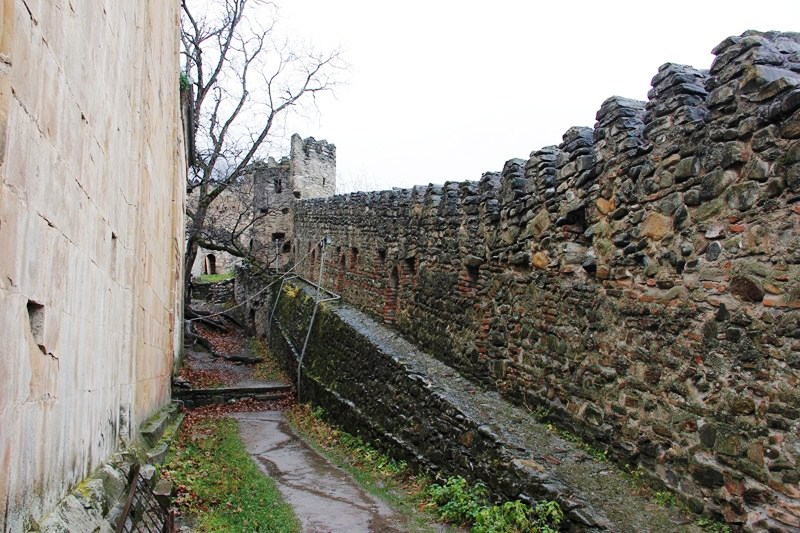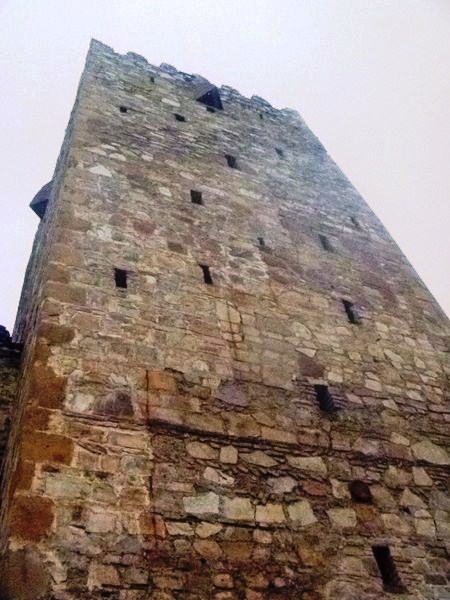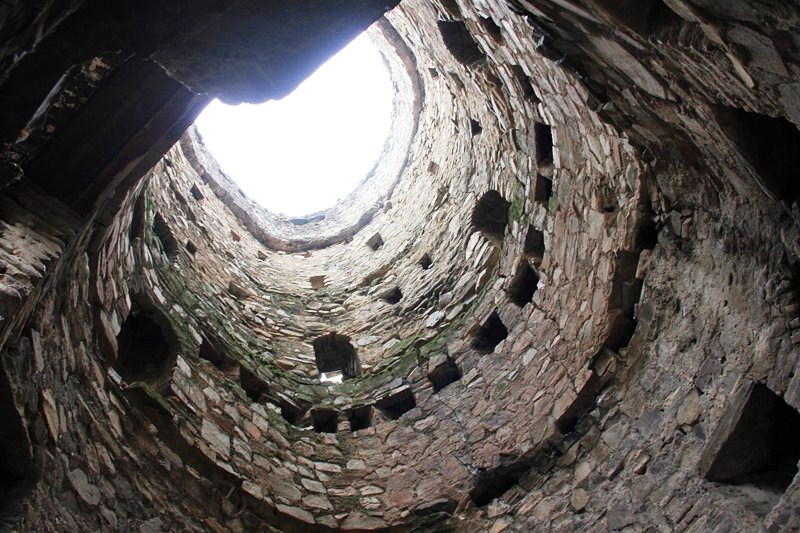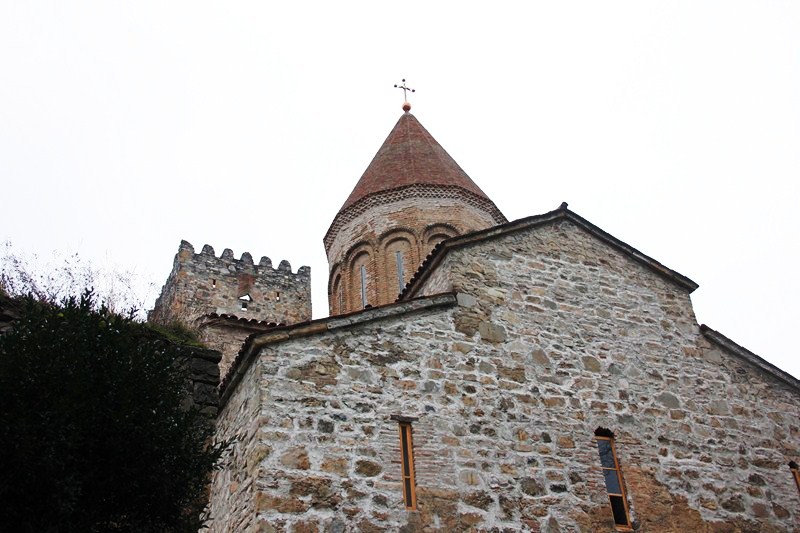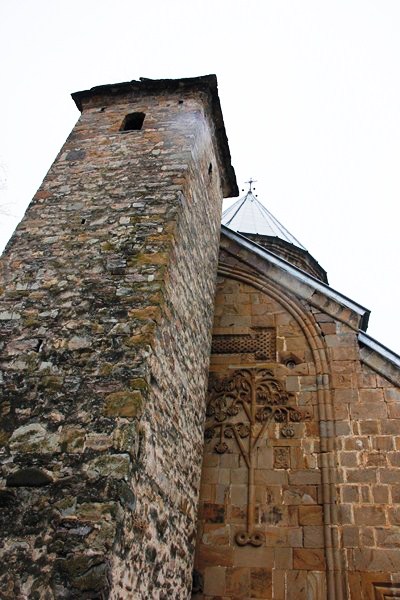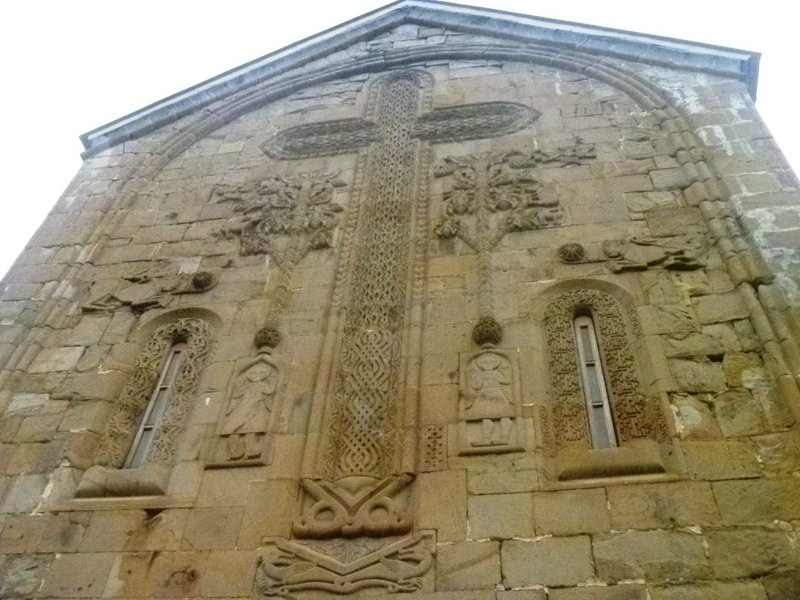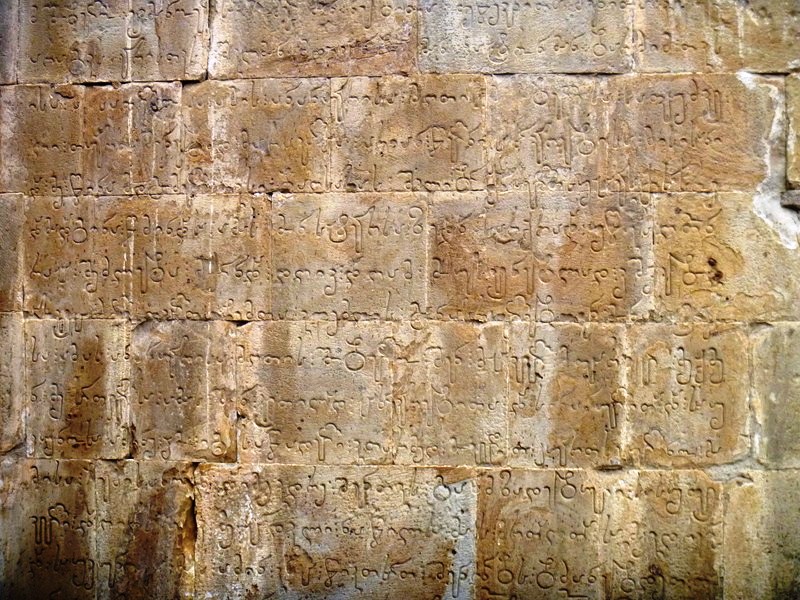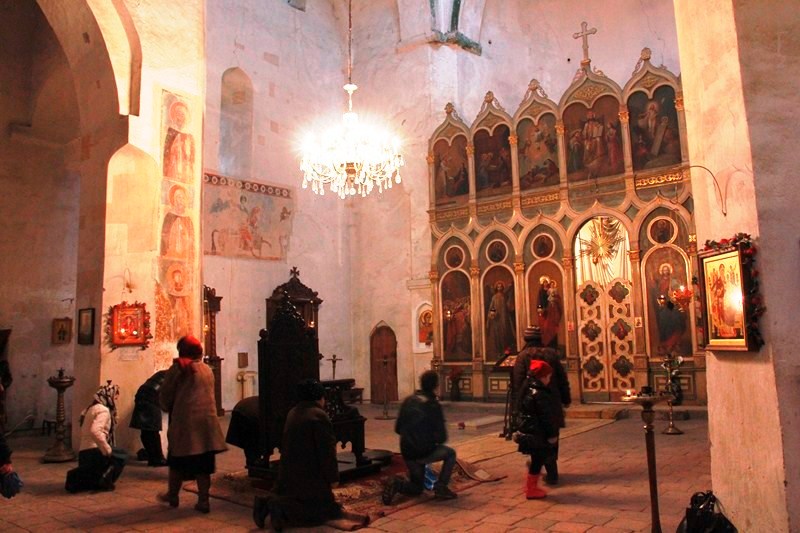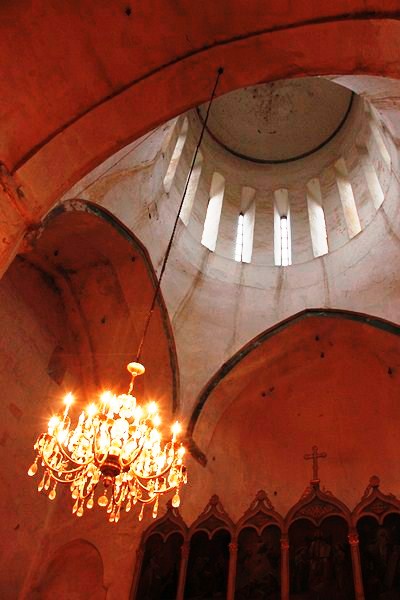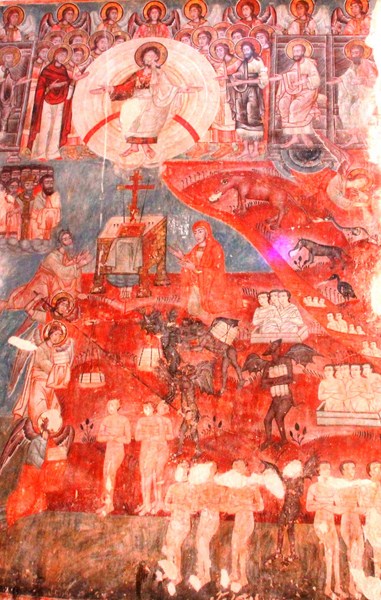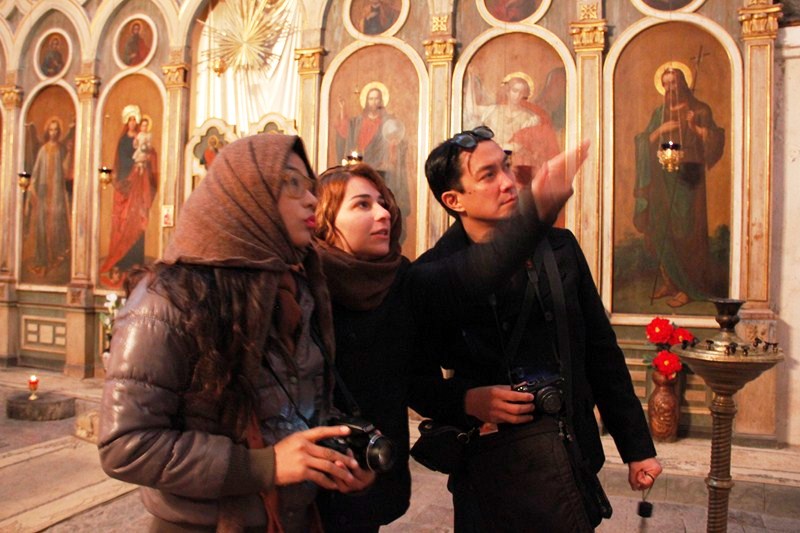(All photos courtesy of Ms. Riva Galveztan)
We started Day Two of our GNTA-sponsored tour of the Georgian countryside by traveling 157 kms. to the northeastern Georgian town of Stepantsminda (formerly Kazbegi). To get there, we would travel along the Georgian Military Highway. This historic mountain road that crosses the Greater Caucasus Mountains, connecting Tbilisi in Georgia with the Russian town of Vladikavkaz in North Ossetia, passes through narrow gorges squeezed between colossal mountains, making for some amazing views.
On one of the turns along the highway, about 72 kms. (45 miles) and an hour away out of Tbilisi, we made a stopover at the scenic Ananuri Fortress which stands spectacularly on a promontory above the large, 11.5 sq. km., azure-blue Zhinvali water reservoir on the Aragvi River, an important water supply for Tbilisi formed after the construction of the Zhinvali Dam.
To get to the castle, we had to make a short walk down a narrow road. This castle complex, the seat of the redoubtable eristavis (dukes) of Aragvi, a feudal dynasty which ruled the area from the 13th century, was the scene of numerous battles as it guarded the way to the ancient capital of Dusheti and, centuries later, the main road linking Georgia with Russia, serving as a garrison for Russian troops.
Zurab Aragveli, a ruthless local prince known for attacking neighboring mountain clans and even blinding his own brother, was responsible for building much of what is now seen. In 1739, the fortress was attacked and set on fire by forces commanded by Shanshe, the duke of the rival duchy of Ksani, and the Aragvi clan was massacred. The usurpers, in turn, were killed 4 years later when local peasants revolted against their rule.
King Teimuraz II was invited to rule directly over them but, in 1746, the king was forced to suppress, with the help of King Erekle II of Kakheti, another peasant uprising. The fortress remained in use until the beginning of the 19th century. In 2007, the complex was placed on the tentative list for inclusion into the UNESCO World Heritage Site program.
The late-feudal Georgian fortress complex, incorporating a circuit wall with turrets, porch, churches, a spring, a reservoir and a Svanetian tower with a stepped pyramidal roof, consists of 2 fortifications joined by a crenellated curtain wall. The well-preserved upper fortification, with a large square tower (known as Sheupovari), is the location of the last defense of the Aragvi against Shanshe.
The lower fortification, with a round tower, is mostly in ruins. Within the complex are two churches. The brick Church of the Virgin, the older of the two, dates from the first half of the 17th century. Abutting a tall square tower, it has the graves of some of the Dukes of Aragvi. Its interior, no longer decorated, has a stone baldaquin erected by the widow of Duke Edishera, who prematurely died in 1674 without giving her a child.
We were to visit the upper fortification. Three of the upper fortification’s five massive towers, including the largest Sheupovari Tower, face the Georgian Military Highway. We all entered the complex to the right of the fortification, from the middle of the southern wall. As we entered the fortress, we faced the Church of the Assumption (Ghvtismshobeli), the main domed cathedral and the larger of the two churches.
The church, built in 1689 for the son of Duke Bardzem and designed by architect: K. Bakhsarashvili, has a central dome and its earliest pyramidal tower is located by its western wall. It is interesting to explore from the outside as it has a richly decorated façade with some very well-preserved bas-reliefs featuring human, animal and floral images. The north entrance has Georgian script carved on the walls while the south façade has a carved grapevine cross. Adjacent to the west wall of the church is a tall, narrow watch tower dating from the 13th or 14th century.
Inside its modest interior, we could still see the remains of a number of frescoes, most of which were destroyed by a fire in the 18th century. Among the scenes depicted are the famous Thirteen Assyrian Fathers, prominent ecclesiastical figures which represent convincing evidence for the study of the iconography of these figures. We also saw people lighting candles (bought from the kiosk on the left hand side as you enter the church) and placing them underneath paintings and icons of saints. Along the church’s east wall are several tombstones.
Too bad we didn’t have time to climb its towers. This fortified ensemble truly was photogenic, thanks to its wonderful location overlooking the Zhinvali Reservoir, as well historically significant, thanks to centuries of royal rivalry. Indeed this true castle, the first one I ever visited, is about as medieval as one can get and was well worth a visit.
Ananuri Fortress: Georgian Military Highway, Ananuri. Open daily, 9 AM – 7 PM. Admission is free.
Georgia National Tourism Administration: 4, Sanapiro St, 0105, Tbilisi, Georgia. Tel: +995 32 43 69 99. E-mail: info@gnta.ge. Website: www.georgia.travel; www.gnta.ge.
Qatar Airways has daily flights from Diosdado Macapagal International Airport (Clark, Pampanga) to Tbilisi (Republic of Georgia) with stopovers at Hamad International Airport (Doha, Qatar, 15 hrs.) and Heydar Aliyev International Airport (Baku, Azerbaijan, 1 hr.). Website: www.qatarairways.com.

